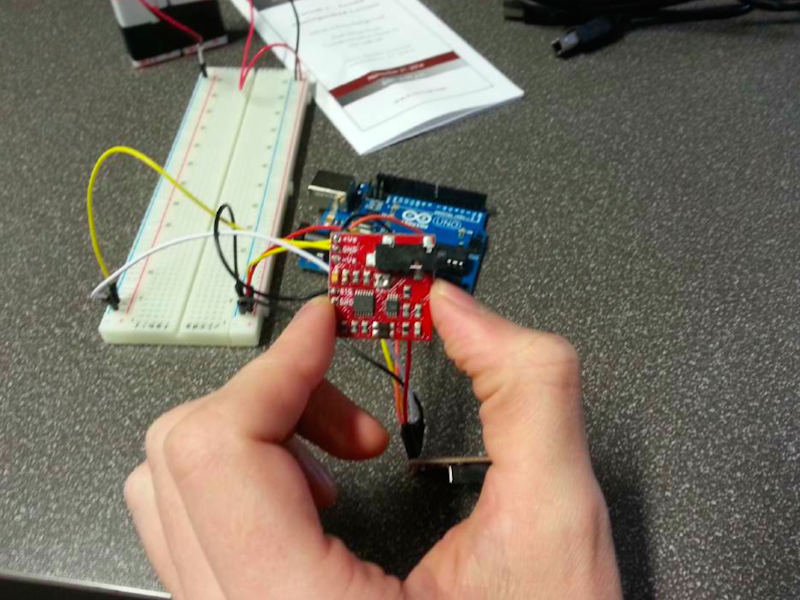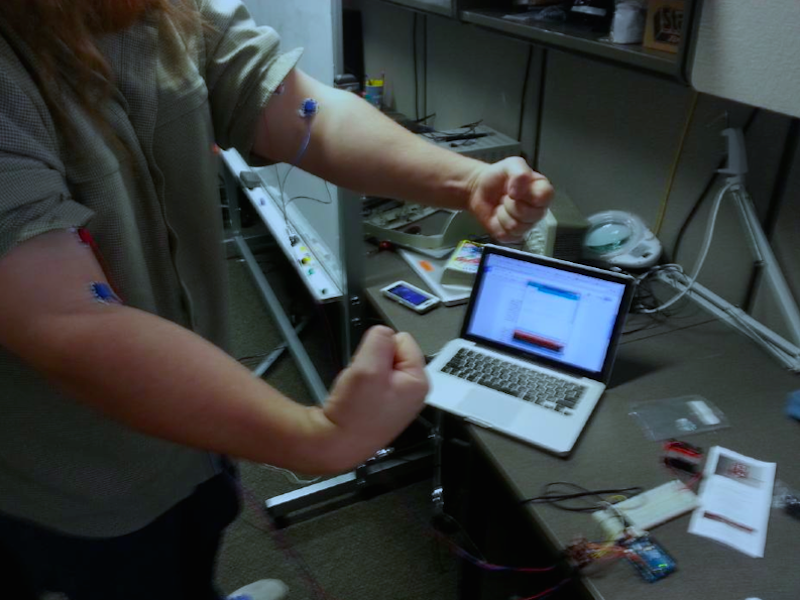The body-sonic kit index
The Body-Sonic: About this Kit
Eddie Lohmeyer
North Carolina State University
 About this Kit
About this Kit
Good and evil, mind and body, man and woman, machine and human: these binaries seem like clichés, even while they often prescribe how we interact with 21st century technology. But where does the human end and the machine begin? Netflix preemptively suggests movies for us, Google completes our thoughts, while GPS signals direct us to a location. In these cases, we are no longer working solely with traditional notions of a well-constituted subject manipulating a technological object, but rather a "becoming" that emerges between complex human-technological assemblages. Netflix works not because we simply tell the application what film we would like to watch, but because of computer algorithms, populations of users, and histories of use that interweave human and technological agency.
Rosi Braidotti notes that in the digital age, one ethical imperative for subjects is to discover what "biotechnologically mediated bodies are capable of doing" (The Posthuman, 61). Rather than focusing on humans and technologies as separate entities, Braidotti seeks to employ a monist ontology that interrogates what is possible with assemblages of humans and machines. But dualistic modes of thought still tend to shape our understanding of the relationships between digital media and user, often through subject-object binaries. Because of the ways in which the digital has fostered numerous possibilities for a techno-mediated body, these dualistic modes of thought no longer suffice to explain what a body is capable of doing. But persistence of these dualisms still tend to be particularly evident within processes of listening and perceiving digital sound. Working from the perspective of sound studies, Eleni Ikoniadu writes that Western thought has often presumed a "tyranny of ocularcentrism" for experiencing the world and gathering knowledge (2). Similarly, Jonathan Sterne describes the "audiovisual litany" as a set of binaries that set up subject-object divides (9). As Sterne writes, "sounds come to us, but vision travels to its object," that "hearing is concerned with interiors, vision is concerned with surfaces," and that "hearing tends toward subjectivity, vision tends toward objectivity" (9).
The Body-Sonic, in its exploration of sound, gesture, and the body, works to move beyond three pervasive dualisms toward a monistic ontology: between a performer and an audience, between a subject working on an object, and between the human and the machine. In engaging with sound studies through rhetoric, first, we hope to dissolve these binaries that are apparent through preconceived sensory notions of listening to and performing sound. Rather than focusing on the human voice as a consciously controlled instrument, we will address the body and its connection to the environment; through this, we will demonstrate how ambient attunement can engage in suasive practices (see Rickert). As a musical performance, The Body-Sonic shows how digital code allows for a blending of body, technology, and environment in which subject-object epistemes in regards to sound begin to dissolve through new modes of multisensorial experiences, intensities, and perceptions. Rather than clear "insides" or "outsides," and rather than clear subjects and objects, we create shifting milieus that interact and transform into one another (see Deleuze and Guattari, especially "On the Refrain"), flows of affect that move from electricity to chemistry to sound.
How it works
The project uses an Arduino based muscle sensor to drive data to a Processing script to synthesize sound. Our processing script uses the Beads library, which allows users to create custom synthesizers. In addition to the body sensors, our project utilizes a "DJ" figure who activates loops and samples.



Works Cited
Braidotti, Rosi. The Posthuman. 2013. Malden, MA: Polity Press.
Deleuze, Gilles and Felix Guattari. A Thousand Plateaus. 1980. Trans Brian Massumi. Minneapolis, MN: University of Minnesota Press, 1987.
Ikoniadou, Eleni. The Rhythmic Event: Art, Media, and the Sonic. 2014. Cambridge, MA: MIT Press, 2014.
Rickert, Thomas. Ambient Rhetoric: The Attunements of Rhetorical Being. Pittsburgh, PA: University of Pittsburgh Press, 2013.
Sterne, Jonathan. The Audible Past: Cultural Origins of Sound Reproduction. Durham: Duke University Press, 2003.